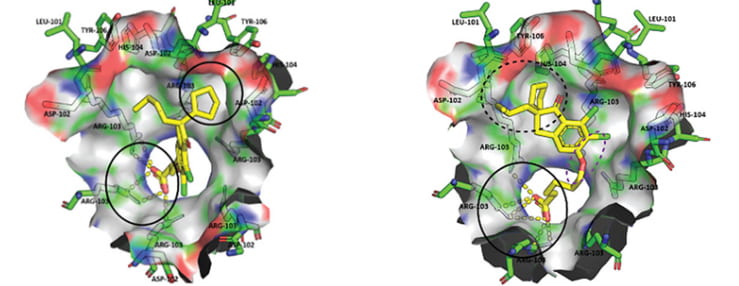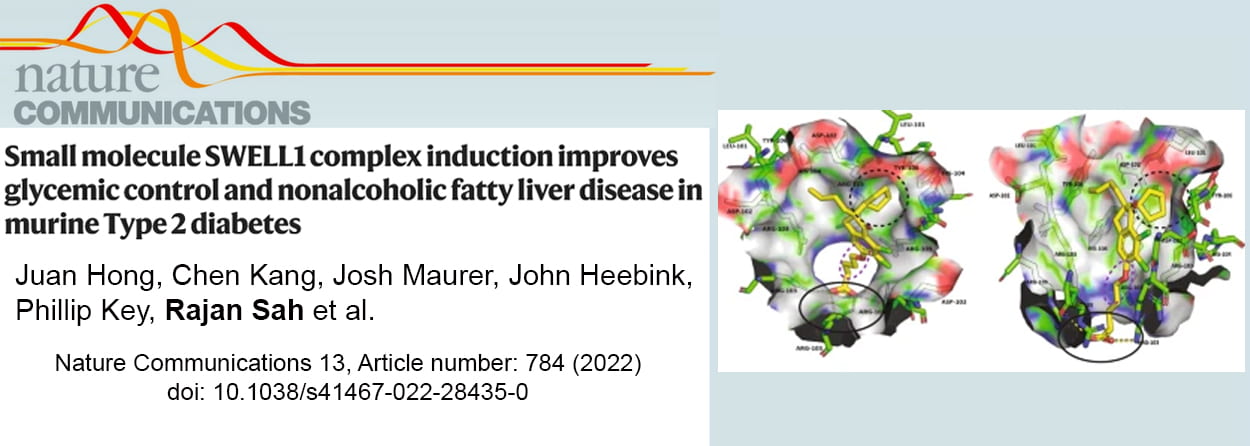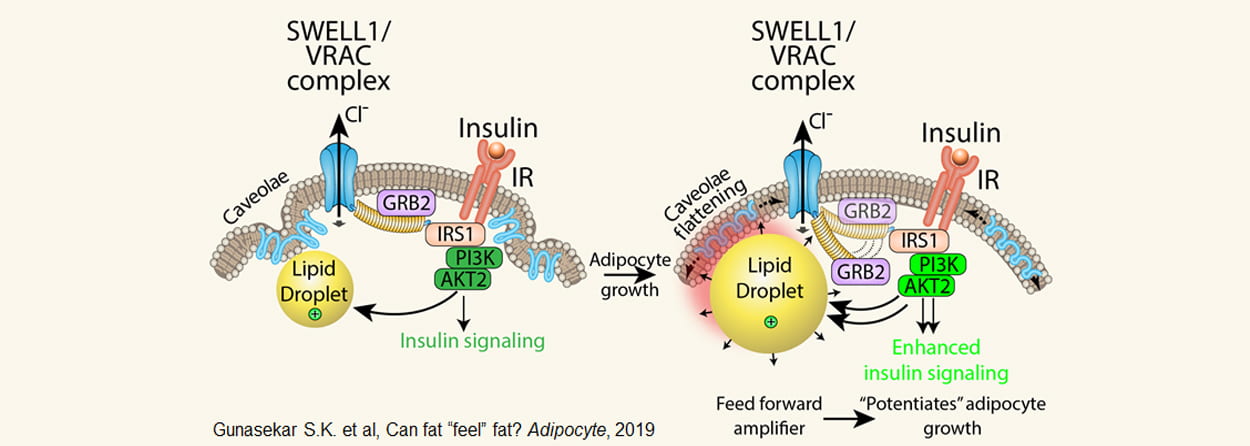Obesity, diabetes and metabolic syndrome are major public health problems and significant risk factors for heart disease in the United States and world-wide. As a clinical cardiologist, I am faced with managing these conditions in patients on a regular basis. My lab is currently focused on studying ion channels as regulators of cellular metabolism in skeletal muscle, adipose tissue and myocardium. Specifically, my research interests focus on intracellular signaling of transient receptor potential channels (including TRPV3, TRPV4 and TRPM7), and the recently identified volume regulatory anion channel SWELL1 (LRRC8a) as they relate to obesity and metabolism. Read More >>>
MicroCT imaging of adipose tissue (red) of mice treated with AAV/rec2-shSCR (left) or AAV/rec2-shSWELL1 (right). From SWELL1 is a regulator of adipocyte size, insulin signalling and glucose homeostasis. Nat Cell Biol. 2017 May;19(5):504-517. doi: 10.1038/ncb3514. Epub 2017 Apr 24.

NEWS ROOM: Diabetes, metabolic syndrome in mice treated with novel class of compounds
Researchers at Washington University School of Medicine have shown, in mice, that a new class of compounds they developed can improve several aspects of metabolic syndrome. Such conditions often lead to cardiovascular disease, the leading cause of death worldwide. Pictured are two of the compounds (yellow) in the new class — SN-401 (left) and SN-406 (right). (Image: Susheel K. Gunasekar (Sah Lab), Pratik R. Chheda (Kearns Lab)/School of Medicine)







